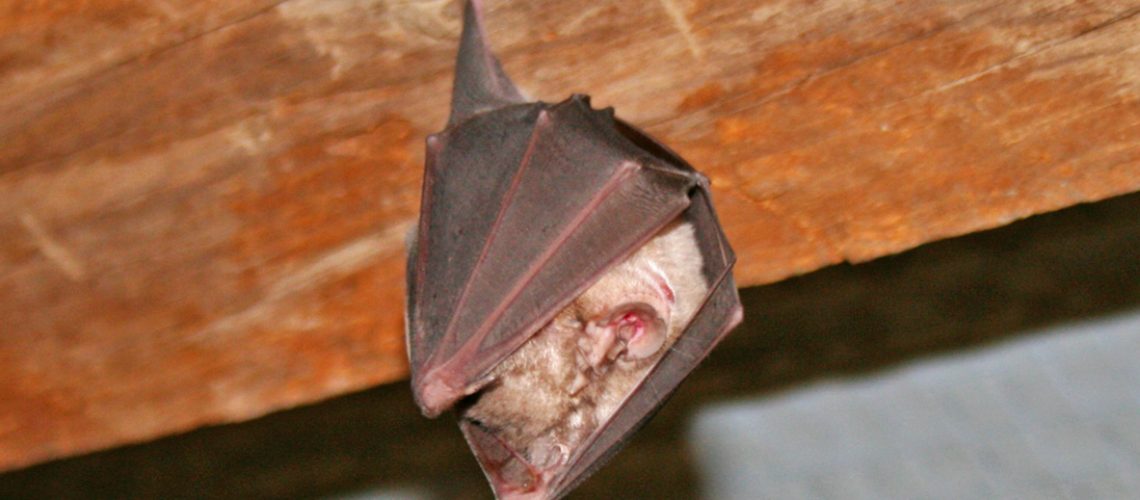
It’s that time of year, between early and late spring when greater horseshoe bats begin to wake more frequently from their winter slumber. Soon they’ll be moving off into transition roosts: this type of roost is usually a building positioned somewhere between their winter and summer quarters. However, these roosts are not usually far from the hibernation site so that if nights become cold and there’s little for the bats to feed on, the bats can return and go back into torpor.
Some bats, particularly males and non-breeding females, will often stay a little longer in their winter quarters; these animals have no need to maintain a high body temperature to facilitate the growth of a baby. The good news is that May heralds the return of a very welcome smorgasbord of delectably delicious beetles and in particular the cock-chafer (Melolontha melolontha) or May bug. These large slow-flying beetles are a godsend to a bat that has used up most of its body fat just to survive the winter. It’s far easier and cost-effective in terms of energy expenditure to catch and eat half-a-dozen of these large insects, rather than flying after dozens or even hundreds of smaller insects. Cock-chafer beetles spend the first three years of their lives as larvae in burrows under pasture. They become adults during early spring but remain underground until late spring, when they emerge and fly to woodlands to mate; this is when the bats pounce and enjoy a large and easy-to-catch meal. Bats will often take these large beetles to a favourite ‘feeding roost’. The beetles are chomped and chewed until the hard wing-cases, and occasionally the heads, fall to the ground. Finding piles of these insect parts on the floor of a building, or in the mouth of a cave is a sure sign that a greater horseshoe bat is catching these bugs nearby.
Despite the recent relatively high day-time temperatures, most nights are still pretty cold and only a few bats have returned to our reserves. One exception is Bryanston in Dorset, where the bats have their winter quarters on-site: the World’s first purpose built hibernaculum ever excavated in solid rock. Not all the bats overwinter here though. Some of the first ringing studies were carried out at this roost and it was discovered that the bats flew down to the Isle of Purbeck to hibernate in the old stone mines. Many of the older bats still prefer, probably by ‘tradition’, to return to the stone mines. In these sites, the temperatures are relatively stable and deep underground they are protected from the daily fluctuations of ‘warm’ winter days and freezing frosty nights.
At one of our reserves in Devon, a barn owl has taken up residence and has developed a penchant for eating the bats. During a recent survey four owl pellets were taken away: one was found to contain two greater horseshoe bat skeletons and another pellet had the fore-arm and finger bones of a third bat’. A discarded head and lacerated wings were also found nearby, suggesting at least four bats have been eaten.
Both species are protected under the Wildlife and Countryside Act – but we’re hoping that the owl will move out sooner rather than later and the bats can then stay undisturbed for the rest of the summer.
You can watch the greater horseshoe bats at our Rock Farm reserve via the Devon Wildlife Trust’s bat project web cam, by clicking here.
Colin Morris, Nature Reserves Manager